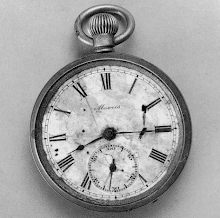Allen Hengst: The Spring Valley FUDS clean-up team does not want to have anything to do with the contaminated soil which was moved [pgs. 13 - 14] from Glenbrook Road to Fort Totten 30 years ago. I understand that you washed your hands of that responsibility, but I am pursuing it now with Delegate Norton and ... had a long discussion with her staff last week about the Park Service’s [NPS] so-called investigation of a WWI-era 75mm exposed at Fort Totten Station two years ago. That artillery shell with a hex plug was dumped in 1992 after multiple tons of soil containing munitions debris and lab waste from the 4825/4835 Glenbrook Road construction site was refused [pg. B-7] at Lorton Landfill ...
[In 2021, NPS] searched the footpath, which is about 30 feet wide and 200 feet long. The soil that was moved from the western section of Fort Totten Park on the orders of the Park Service ... to the area where this footpath is — there is no way on God’s green earth that all of that could have been put in that tiny area. [The Park Service] needs to explore to the east and west ... [Norton] either misunderstood what the [NPS] said, or they have misled her. The entire area is not the footpath. She thinks that they searched the entire area, and they are probably thinking, "well we did search the entire area and the entire area is the footpath." Sorry, that is not good enough.
Dear Congresswoman Norton,
... Please note that the ultimate destination of the 1992 toxic Spring Valley fill material was a narrow wooded strip of land east of the Metro station between Gallatin and Galloway Streets, NE, approximately “2100 feet” [sic] east of the original staging area (August 2021 PA/SI Report, Introduction, pg. 2). The controversy that obliges me to write today’s certified letter and my March 12, 2022, blog post — entitled “Norton Falls for NPS Whitewash of Fort Totten WWI-Era Munition" — can be neatly summed up by the statement: it all depends on what you mean by “the entire area.” In his March news article WTOP Reporter Augenstein quotes you extensively, regarding your closed-door session with relevant officials involved in the NPS investigation at Ft. Totten, as stating:
“We had a very in-depth meeting. There has been a thorough search of the entire area, and no additional ordnance or issues had been turned up — I hope I can rely on that, this time.” “They have assured me that they have done a very thorough search of the entire area.” ... “When they say the entire area, that’s what I’m going to hold them to.”
Of course, as documented in the previously cited August 2021 PA/SI Report, last year's investigation for additional buried Spring Valley WW-I ordnance and COPCs was anything but "thorough." Even though the NPS knew, based on its 2019 SI Report that multiple tons of "uncompacted fill material” was dumped in western Ft. Totten in 1992 "as part of landscape restoration” [Section 2.2, pg. 5] and then removed, the recovery of an AUES UXO in July 2020 on the narrow strip of park land in eastern Ft. Totten did not trigger the wider examination that such a discovery should have warranted. Instead, the agency chose to coverup the existence of additional buried munitions debris and laboratory waste, issuing a clean bill of health for this poisoned site. In short, I believe the Park Service simply examined the narrow quarter-acre footpath and misrepresented that perfunctory search to the Congresswoman as an investigation of "the entire area."
Allen Hengst
.png)
.png)
bCrop.png)
.gif)
a.jpg)
b.jpg)
.png)






